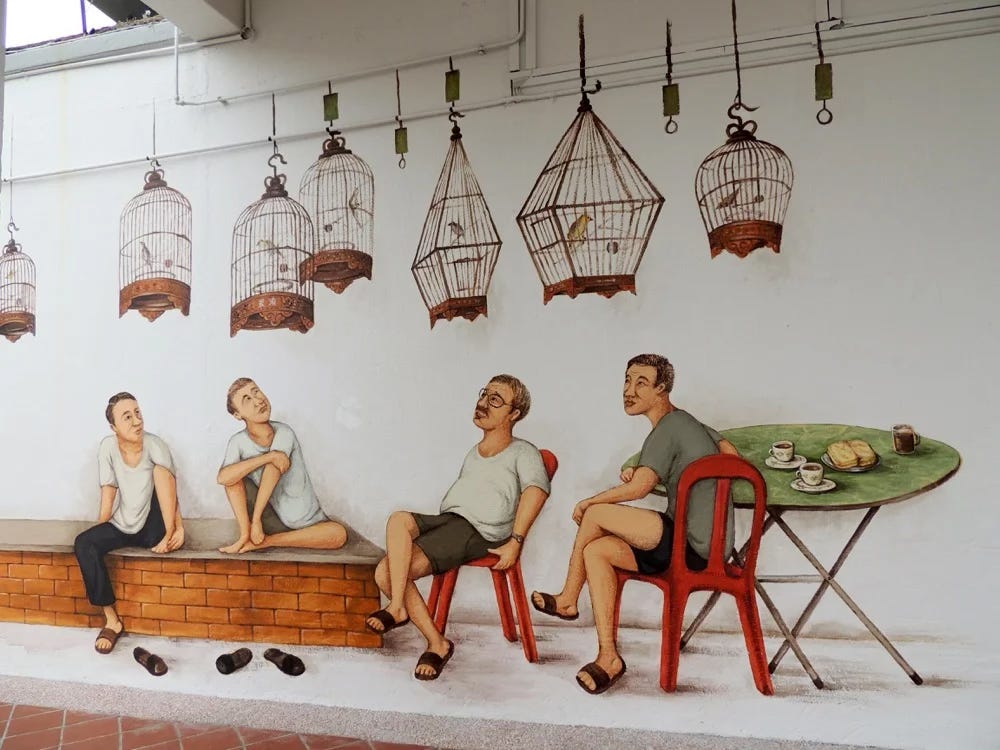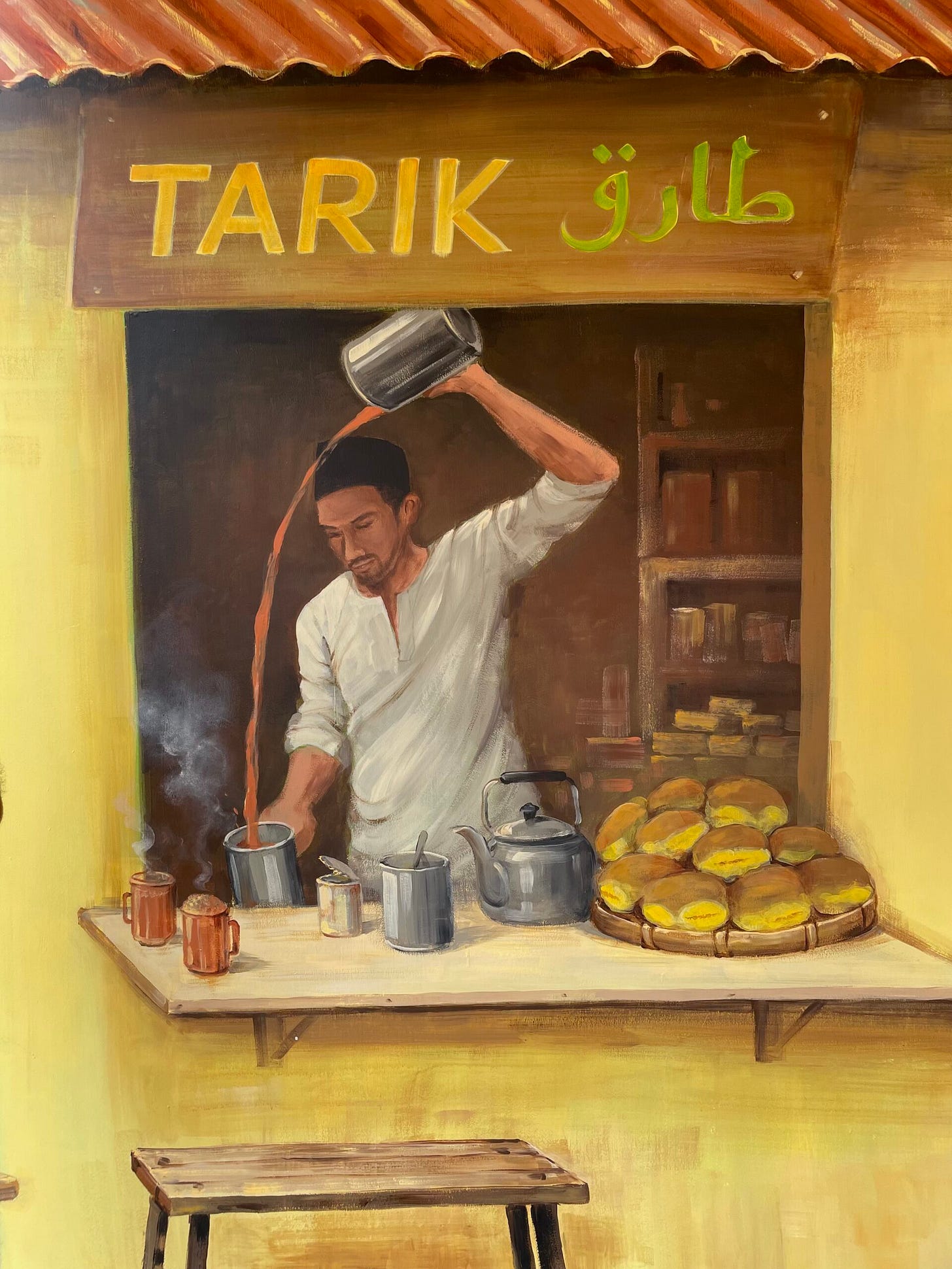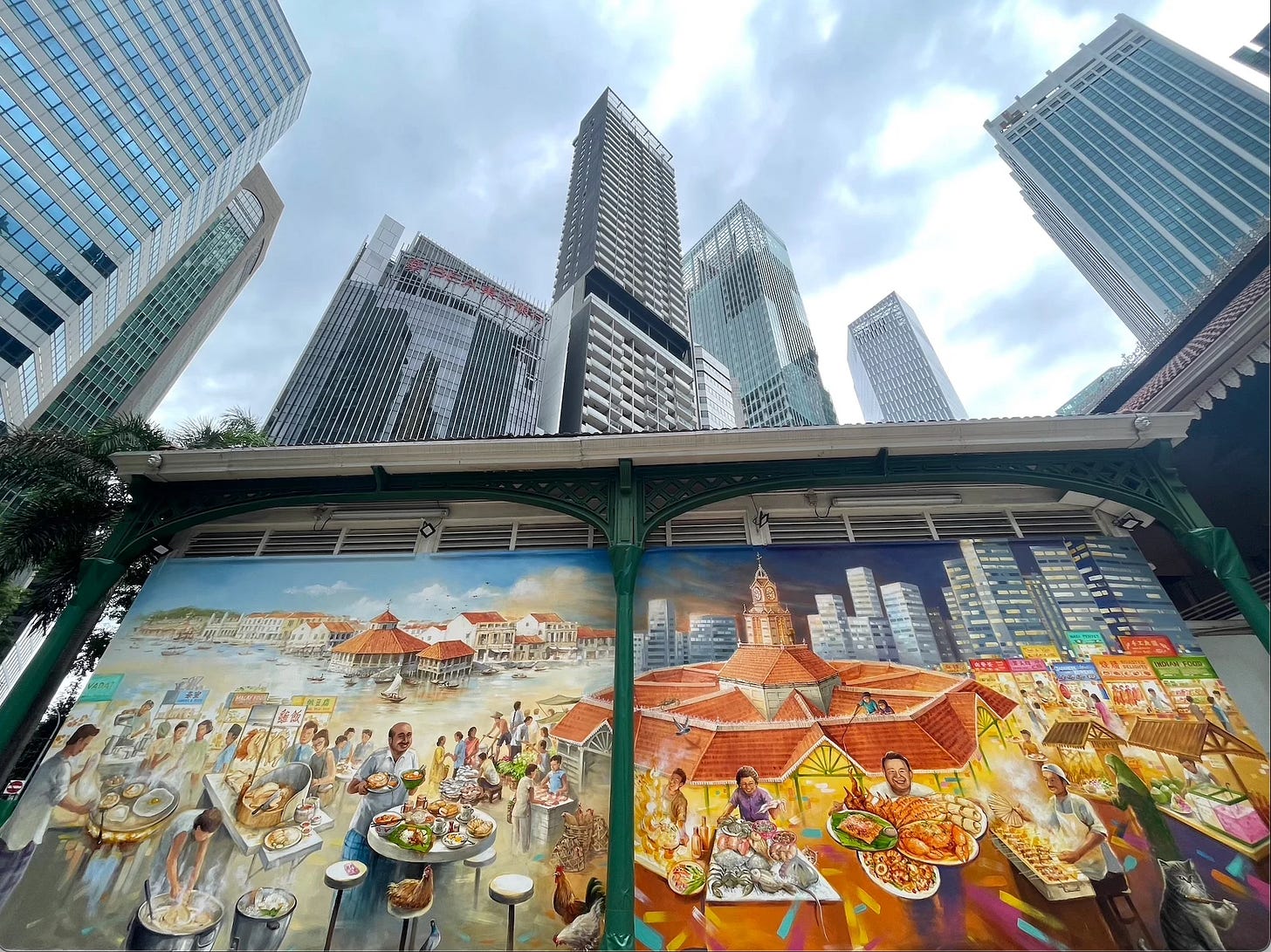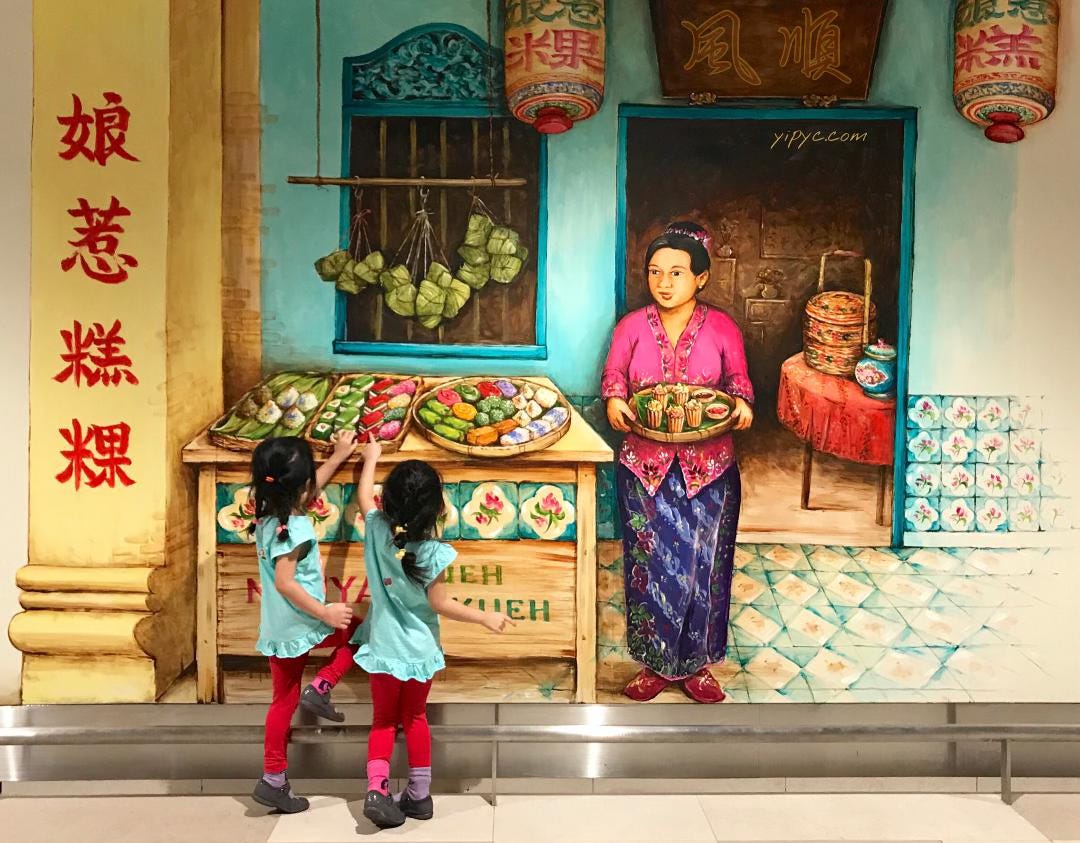Seeing the Bigger Picture with Yip Yew Chong
Join me for a chat with one of Singapore’s most well known artists, Yip Yew Chong, in the middle of preparations for his 5yr project painting scenes from around the globe.
It is impossible to be in Singapore and not be aware of the art of Yip Yew Chong. From Chinatown to Changi, Tiong Bahru to Woodlands, his colourful murals vividly capture the everyday life and culture of Singapore. Yew Chong’s artistic journey began with a childhood love for drawing, which blossomed into a career that has made him one of the most renowned contemporary artists in Singapore.
What sets Yew Chong apart is his remarkable ability to see the big picture, a skill he has honed in both his accounting and artistic careers. In accountancy, this perspective enabled him to grasp the broader implications of his work. Now, as an artist, this same ability allows him to envision and execute large-scale works that resonate deeply with viewers both locally and abroad. His murals blend imagination with detailed observation, reflecting the essence of local scenes and offering a window into both ordinary and extraordinary moments of life.
In our conversation, Yew Chong will share insights into his transition from a successful accounting career to becoming a full-time artist. He’ll discuss the practical aspects of mural painting, including his approach to Singapore’s challenging climate, and how his work connects with the public. With his upcoming project, "I Paint My World," Yew Chong plans to explore and capture diverse cultures across Southeast Asia and beyond.
Can you give me a brief background to how you started painting?
As a child, I always loved drawing with colour pencils, crayons, just like every other child. That has always been with me, even when I was in school where I was chairman of the art club, I painted a 50m long mural at our swimming pool. So art has always been part of what I do whether I’m studying science at university, studying accountancy or serving national service. In fact, I have always been the one designing backdrops for school plays or T-shirts for colleagues or leaving presents.
How did you start painting murals?
I went around cold-calling and knocked on doors to beg house owners to let me paint on the wall for free. After that, I started to get a few commissions, but I didn't want to give up my full time job, you have to pay the bills, so I pinched time at the weekend while I was still working as an accountant on the weekdays. That went on for three years.
At what point did you realise you could earn enough from painting?
I had started to become recognised and had a pipeline of commissions and my children had grown up. My wife kept nudging me asking “When are you going to resign? It’s time to look after yourself now.”
So you started painting full time, painting local scenes of Singapore.
Yes, that's right. Local life, not just Singapore. Local means wherever I am.
Your paintings are of ordinary people doing ordinary things so you must be a great observer of people and how they interact with the space they are in, but you also use your memory and imagination to create these scenes can you explain how that works?
Actually, the majority of the inspiration is from imagination, it's probably around 50%, but I also paint my impressions of somewhere so while we sit here, I'm capturing the impression of the ambience, the lighting, the mood.
Do you take photographs?
I do. That comes later. At first I need to understand the ambience and next is the detail. How does the table look like? What type of food? Then I refer to the photographs. Is the table square? Is it round? How many people are seated?
And do you paint these scenes to convey any kind of message?
No, unless it's requested specifically, I just paint the day-to-day. No message. You get what you see. Nothing hidden, no politics or propaganda.
Do you think that your accounting background has any bearing on what or how you paint?
I lived for 1.5 years in the Netherlands and in Tokyo for about a year. It was a really great experience because I felt very proud as a Singaporean, from Asia, managing a European team. Taking Singapore thinking to the Europeans! Yeah, they were quite surprised at some of my ways of doing things but I encouraged them to step back and see the bigger picture. Accountants are stereotyped as bean counters, which is not true. We also step back and look at the big picture. It is this skill which allows me to paint such large scenes.
That's why we need creatives because the way they think gives us all an alternative perspective.
Yes. You spend an hour looking for those few dollars, but you miss the point that there is a lawsuit behind the scene and you didn't even account for it!
I love how seeing the bigger picture is what links both your careers.
Yes and a big philosophy for me is ‘don't over plan!’ When I became an accountant it was by accident. I wanted to study science engineering but was advised that it's better to start with accountancy. And then in art, I never intended to become an artist it was also by accident. In fact I wanted to be a filmmaker!
You can see this in the cinematic stories you paint. How do you manage the practicalities of perspective in your murals?
If you're painting a mural, you know where people are going to be looking at the image from so if you look up and you see the ceiling first rather than the floor, then I’ll paint it how is it. It's common sense, it's just observation. If it’s not right, I just take my paintbrush and correct it! It’s very intuitive.
The climate in Singapore must cause issues with the longevity of your work.
I use acrylic paint which is weatherproof to a certain degree but nothing will beat the weather. Singapore is one of the worst places to have a mural, nature takes over! Sometimes the owner of the building will ask me to redo parts of them, but they are not meant to be permanent, and the mural is never meant to be there in the first place. Sometimes plants will grow over them but that's the nature of it – a street scene should just continue to be dynamic.
How do people engage with your art?
I think because my art is generally connected to its location, people can see their history or their culture, everyone can see a bit of themselves. It makes them feel a sense of belonging and being in this place rooted to their culture.
When you paint murals you are creating public art that anyone can see and comment on. Have you ever had any adverse comments or criticism about your work.
There’s no difference whether it is in public or in a gallery, because nowadays with social media, you don't just exhibit behind closed doors, it is posted online so it's as public as on the streets. I’ve had both criticism and praise, which is good, which means people are engaged with my work and I try to ignore destructive criticism. Sometimes people mistake my art as documentation, as preservation or history. No, it is not. It is art, which is the expression of my memories, of my connection with whatever I like with whatever my passion, it is not a camera to capture exactly how a table looks or whether its perspective is correct.
There was some controversy recently over the Samsui woman mural painted by Sean Dunston depicting a woman with a cigarette which received some very public criticism.
Yes. I just think that in the public space we must be sensitive to the local residents, for instance there might be a mosque or a temple facing the mural or students passing by. There was another case recently, a mural in the style of the Aeroplane Chess boardgame. There were two issues with this. One is, the complainant said the aeroplanes look like missiles pointing towards a target and another is that the resident feels that the green and the red colours reflect into their house and the whole house looks like reddish and greenish. Would you be angry if your whole house was red? So I empathise. All these things create dialogue, which is really important but I also say that the artist should exercise sensitivities.
How do you see this being resolved?
I said on CNA news recently that we should actually have a one services platform where public artists have access to all types of approval in one place, rather than having to apply to many different bodies. It's all over the place, so fragmented, so people don't know whether approval is needed or where to submit plans.
Do you know anyone who's been inspired by your work to start painting ?
My Singapore works have inspired artists even far away as Turkey! People have sent me pictures of a version of my Chinatown mural there. I've also seen a version of one my murals in Pakistan, in Lahore. In my one I painted my mother cooking, but in Lahore is it someone of course in Pakistani dress.
Last year I was in Phuket and I visited the market. Outside the toilet was the exact same painting of one of my murals in Singapore but the funny thing was that the artist had copied a photo from my website with two (real) little girls trying to pick the food from the painting and the artist had painted them into their mural so the little girls became part of it!
That's extraordinary! So art imitating life, imitating art. That must be very rewarding. So your next project, I Paint My World. Can you tell me about this?
I’ve got a five year plan. I’m going to be travelling to different places in the world and then painting a scene which will represent elements of each country. But it’s not just about the travelling, I see this whole thing, the painting, myself painting and myself travelling as the total process, not just the painting itself.
I have a target that this next 1.5 years I have to cover Southeast Asia, N Asia and South Asias so I will spend maybe three months overseas for research and content and the rest of the time painting.
Final question! Do you have any advice for aspiring artists?
Normally I will say it depends on your stage of life. Artists can be parents, people who have worked many years and just want to switch to art or they can be a student who has just graduated from, say, science. Because social media and technology is so accessible, you can just say ‘let's go for it.’ I think it is good to paint what you are passionate about and not to try to overly mimic other artists. So you create your own niche, have your own expression and then over time develop your own style.
If you have family obligations then you can also take my approach and continue to work. You don’t have to give up the job, you can do it parallel until you feel comfortable to switch. It's never too late!
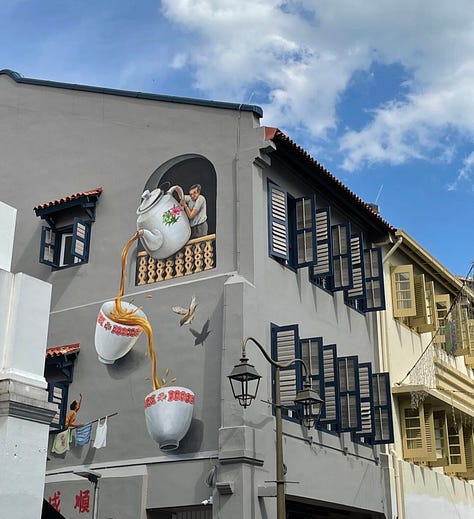
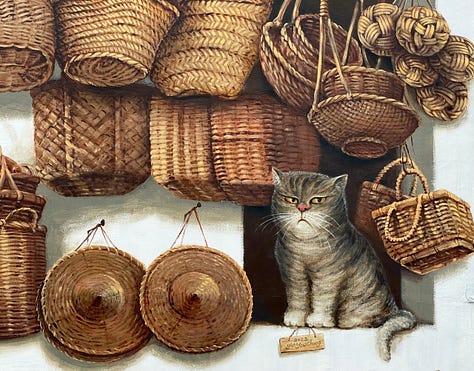
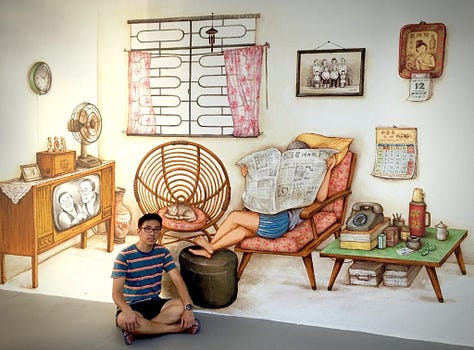

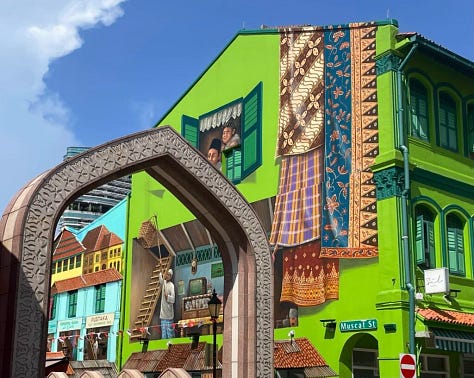
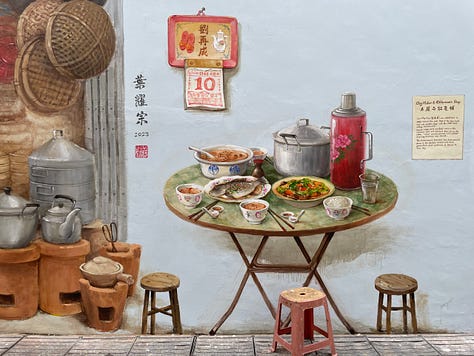

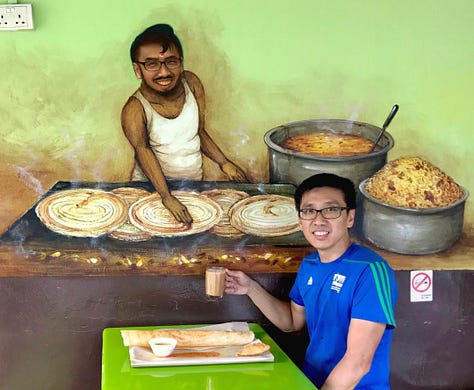
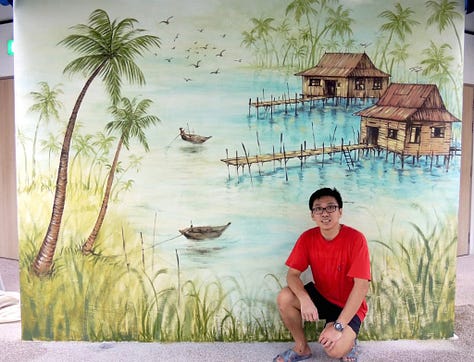
Find out more about Yip Yew Ching’s artwork at the following links:
Website: yipyc.com
Instagram: @yipyewchong
Facebook: Yip Yew Chong





